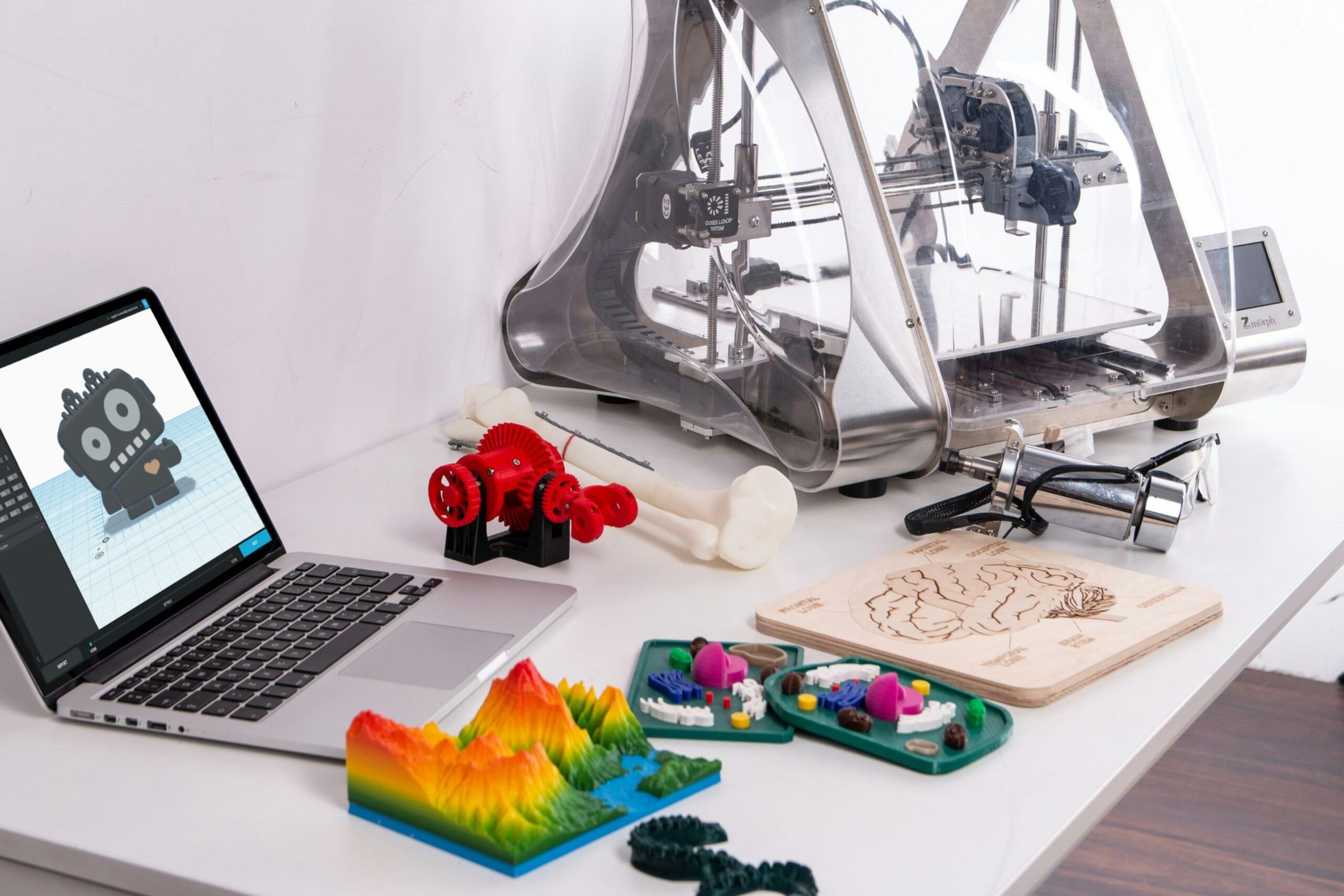Top 5 3D Printers for Home Use in 2023
Introduction to 3D Printing at Home
The advent of 3D printing technology dates back to the early 1980s, but its evolution over the decades has made it accessible for home users. Initially used primarily in industrial contexts for rapid prototyping, 3D printing has transformed, becoming an integral part of creative pursuits for hobbyists and professionals alike. The technology employs processes such as fused deposition modeling (FDM) and stereolithography (SLA) to create three-dimensional objects from digital models, significantly broadening its application scope.
In recent years, the growing popularity of 3D printing among enthusiastic makers has led to a surge in affordable 3D printers designed specifically for home use. From crafting bespoke items to undertaking DIY repairs around the house, the practical applications of this technology have become evident. As users familiarize themselves with 3D modeling software, they can produce anything from personalized gifts to specialized components, turning imaginative ideas into tangible realities. This hands-on involvement fosters a sense of creativity and innovation that resonates with many individuals.
Moreover, the community surrounding 3D printing has flourished, with online platforms providing resources, tutorials, and forums where users can share knowledge and support one another. As a result, 3D printing has emerged not just as a hobby, but as a vital tool for problem-solving. For instance, it allows users to design custom solutions for specific challenges they encounter within their daily lives, promoting both efficiency and resourcefulness.
In conclusion, 3D printing at home represents a remarkable intersection of technology and creativity, illustrating how advancements can empower individuals to enhance their environments and express their ideas practically. This trend is poised to continue to grow, offering limitless potential for innovation and self-expression in the years to come.
Factors to Consider When Choosing a Home 3D Printer
When selecting a 3D printer for home use, several critical factors must be taken into account to optimize your purchasing decision. These considerations will help ensure that the printer you choose effectively meets your specific needs and preferences.
Firstly, budget constraints play a pivotal role. The price of 3D printers can vary significantly, ranging from affordable entry-level models to high-end professional machines. Establishing a budget not only allows you to focus on models within your financial means but also eliminates options that might not offer suitable features for home use.
Another important consideration is the type of printing technology employed by the printer, primarily Fused Deposition Modeling (FDM) or resin-based printing. FDM printers are generally more user-friendly and cost-effective, making them popular for beginners and hobbyists. Conversely, resin printers provide superior detail and finish, making them suitable for applications requiring higher precision, such as miniatures or intricate designs.
Build volume is yet another critical factor, as it determines the size of objects you can print. If your projects often require larger components, a printer with a substantial build area becomes essential. Additionally, evaluating ease of use and print speed can significantly impact your overall experience. A printer that is straightforward to operate, with user-friendly software and quick calibration processes, will minimize frustration and enhance productivity.
Material compatibility is also vital, as not all printers support the same types of filaments or resins. Understanding the range of materials that your desired printer can handle will ensure that you can work on diverse projects without restrictions. Lastly, consider the level of customer support that is available from the manufacturer, which can be invaluable for troubleshooting and maintenance issues as they arise. By carefully weighing these factors, potential buyers can make a well-informed decision when selecting a home 3D printer.
Review of the Top 5 Home 3D Printers in 2023
In 2023, the market for home 3D printers offers a myriad of options. After thorough evaluation based on price, technology, ease of setup, print quality, and user feedback, the following are the top five recommended 3D printers suitable for home use.
The Prusa i3 MK3S+ tops the list due to its outstanding performance and reliability. Priced around $999, it employs Fused Deposition Modeling (FDM) technology. Users particularly praise its print quality and community support. Notable features include a magnetic heatbed and filament sensor, enhancing user experience and convenience for beginners and seasoned users alike.
Next is the Creality Ender 3 V2, known for its affordability at approximately $279. This FDM printer has garnered significant attention for its robust build and excellent print quality, making it a favorite among hobbyists. Its modular design facilitates easy assembly, while the online community provides substantial ongoing support for troubleshooting and enhancements.
The Anycubic Photon Mono X makes a strong case for itself in the resin printer category, priced at $599. This printer utilizes LCD-based DLP technology, allowing for high-resolution prints. Users appreciate its speed and the exemplary detail it can achieve, making it ideal for creating intricate models and miniatures.
Ranking fourth, the Elegoo Mars 2 Pro is another resin printer, retailing for about $259. This model is celebrated for its affordability and user-friendly interface, making it accessible for beginners. The print quality is commendable, and the compact design helps fit well in small spaces.
Finally, the Artillery Sidewinder X1 rounds out the list at approximately $499. Known for its large build volume, this FDM printer appeals to users looking to create larger objects. Its silent stepper motors and direct drive extruder contribute to minimizing noise and enhancing print precision.
Each printer reviewed here showcases unique attributes tailored to different user needs, ensuring there is a suitable option for every home 3D printing enthusiast in the market.
Getting Started with Your Home 3D Printer
Starting your journey into the world of 3D printing can be both exciting and overwhelming. To help ease the process, you’ll need to follow several essential steps that will serve as a foundation for your 3D printing experience. First and foremost, setting up your 3D printer is crucial. Begin by carefully unpacking the device and ensuring all parts are intact. Follow the manufacturer’s instructions for assembly and calibration, paying attention to leveling the print bed, which is vital for achieving successful prints.
Once your printer is set up, selecting the right slicing software is the next step. Slicing software converts your 3D model into a format that your printer can understand. Popular options include Ultimaker Cura and PrusaSlicer. These programs allow you to adjust settings such as layer height, print speed, and filament temperature, which are key factors in determining print quality. When choosing slicing software, consider compatibility with your specific printer model. Familiarizing yourself with the software’s interface and settings will significantly influence your printing outcomes.
After you’ve configured the slicing software, it’s time to print your first test project. Many beginners start with simple designs, like calibration cubes or small figurines, to gauge their printer’s performance. Websites like Thingiverse offer a plethora of downloadable print files suitable for novice users. Engaging with online communities can further enhance your learning. Platforms such as Reddit and dedicated Facebook groups provide valuable resources, where you can ask questions, share experiences, and connect with fellow 3D printing enthusiasts.
In conclusion, starting with a home 3D printer involves careful setup, selecting appropriate slicing software, and utilizing online resources to maximize your experience. Engaging with communities will enrich your understanding and inspire creativity as you embark on your 3D printing journey.



